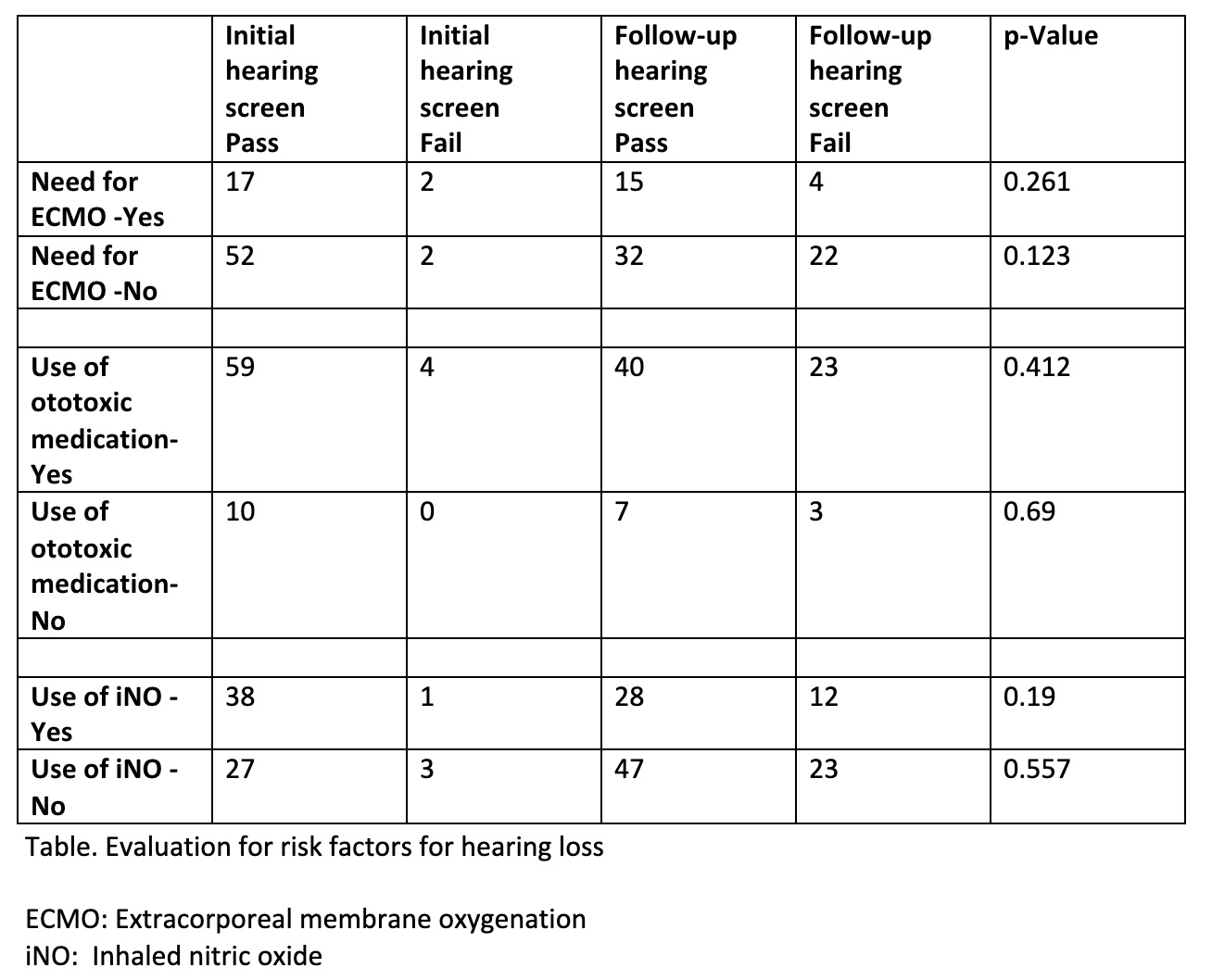Neonatal Follow-up
NICU Follow Up and Neurodevelopment 1: Developmental and Sensory Disorders
204 - Hearing screen results compared at discharge and one year follow up in infants with congenital diaphragmatic hernia
Friday, April 28, 2023
5:15 PM - 7:15 PM ET
Poster Number: 204
Publication Number: 204.142
Publication Number: 204.142
Alice J. Yu, Children's Mercy Hospitals and Clinics, Kansas City, MO, United States; Apurva Panchal, Children's Mercy Hospitals and Clinics, Overland Park, KS, United States; Kimberly S. Hunter, Children's Mercy Hospitals and Clinics, Prairie Village, KS, United States; Chaitali Mahajan, Children's Mercy Hospitals and Clinics, Overland Park, KS, United States

Alice J. Yu (she/her/hers)
Medical Student
Kansas City University; Children's Mercy Hospitals and Clinics
Kansas City, Missouri, United States
Presenting Author(s)
Background: Infants with congenital diaphragmatic hernia (CDH) are at higher risk for hearing loss(HL) than the general population. The incidence of HL in CDH is variable ranging from 3.8%- 60%. The American Academy of Pediatrics recommends post-discharge follow-up hearing assessment in infants with CDH. Whether there exists a discrepancy in the results between the initial hearing screen at discharge and the follow-up screen after discharge is not clear from previous literature.
Objective: To determine the incidence of hearing loss in infants with congenital diaphragmatic hernia (CDH) at hospital discharge and at a follow-up clinic visit and compare the results.
Design/Methods: A retrospective cohort study of infants with CDH at a regional level IV neonatal intensive care unit from 2010 to 2020 who received auditory brainstem response (ABR) prior to hospital discharge and at follow-up audiogram ~12-24 months of age. Previously identified factors associated with HL in CDH including the use of extracorporeal membrane oxygenation (ECMO), use of ototoxic medications, duration of mechanical ventilation, and inhaled nitric oxide use were also studied in our cohort.
Results: A total of 73 infants met the inclusion criteria. 4 out of 73 infants failed the hearing screen at the hospital discharge whereas 26 out of 73 infants failed the audiogram at the follow-up visit between 12-24 months of age. The median duration of mechanical ventilation is 13 days. There was no statistically significant association between the failed hearing screen and the risk factors including the use of ototoxic medications, and the use of extracorporeal membrane oxygenation or inhaled nitric oxide use.
Conclusion(s): In our cohort, 5.5% of CDH infants failed the initial hearing screen at discharge and 35.6% failed the follow-up screen which is within the range reported in previous literature. More patients were identified with HL with subsequent testing. This indicates the importance of repeated hearing screens and follow-ups in this high-risk group. It is imperative to continue evaluating hearing in infants affected by CDH at regular intervals post-discharge.

